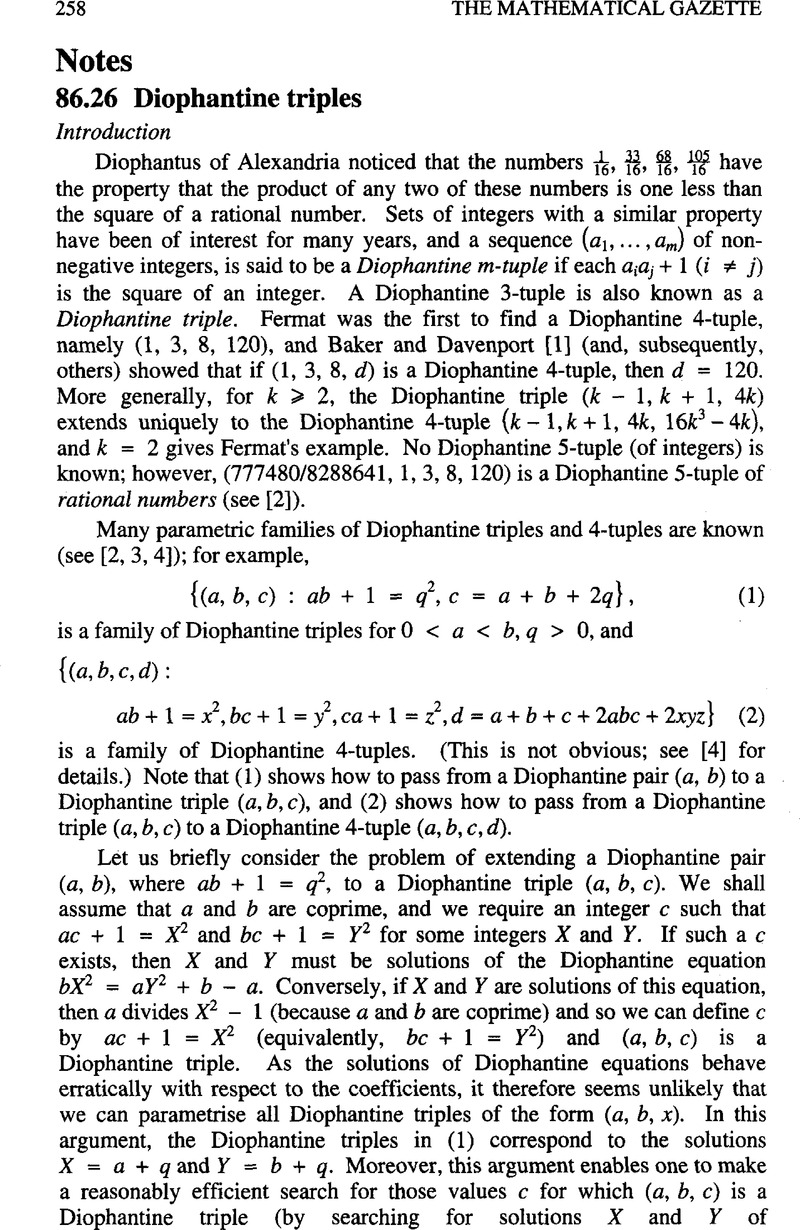No CrossRef data available.
Article contents
Diophantine triples
Published online by Cambridge University Press: 01 August 2016
Abstract
An abstract is not available for this content so a preview has been provided. Please use the Get access link above for information on how to access this content.

- Type
- Notes
- Information
- Copyright
- Copyright © The Mathematical Association 2002
References
1.
Baker, A. and Davenport, H., The equations 3x
2 - 2 = y
2 and 8x
2 - 7 = z
2
, Quart. J. Math. (Oxford Ser. 92) 20 (1969) pp. 129–137.CrossRefGoogle Scholar
2.
Arkin, J., Hoggat, V.E. and Straus, E.G., On Euler’s solution of a problem of Diophantus, Fibonacci Quart. 17 (1979) pp. 333–339.Google Scholar
3.
Dujella, A., Generalized Fibonacci numbers and the problem of Diophantus, Fibonnaci Quart. 34 (1996) pp. 25–30.Google Scholar
4.
Heichelheim, P., The study of positive integers (a, b) such that ab + 1 is a square, Fibonacci Quart. 17 (1979) pp. 269–274.Google Scholar
5.
Deshpande, M.N., An interesting conjecture, Math. Gaz. 84 (July 2000) pp. 296–298.CrossRefGoogle Scholar




